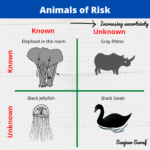We all know that air is mostly nitrogen…79% to be precise. What may not be a common knoweldge is that colorless odorless Nitrogen has led to asphyxiation and fatalities and is a risk particularly for personnel working in confined spaces and personnel utilizing breathing air systems.
According to the Chemical Safety Board (CSB) research there were 80 nitrogen asphyxiation fatalities between 1992-2002. This translates to one nitrogen asphyxiation death every seven weeks. Approximately, 10% of fatalities were due to attempts to rescue person in confined spaces.
Reduced Oxygen concentration (18% or below) in breathing air can lead to asphyxiation.
At 16% Oxygen concentration, may impair thinking and the person may lose coordination.
An 4-6% Oxygen concentration in the atmosphere causes the victim to fall into a coma less than 40-seconds.






3 Responses
Any gas that displaces or replaces oxygen in sufficient volumes is a potential hazard to humans (CO2, CO, CH4, He, Ar, etc). Increases in CO2 & CO can be detected (various techniques incl. laser etc) and natural gas is odorized so we can smell it or detect it easily. Other gases N2, He, Ar, etc. are not readily detected and the only solution is to detect the absence of oxygen by various tecniques incl. electrochemical, paramagnetic, laser, etc.